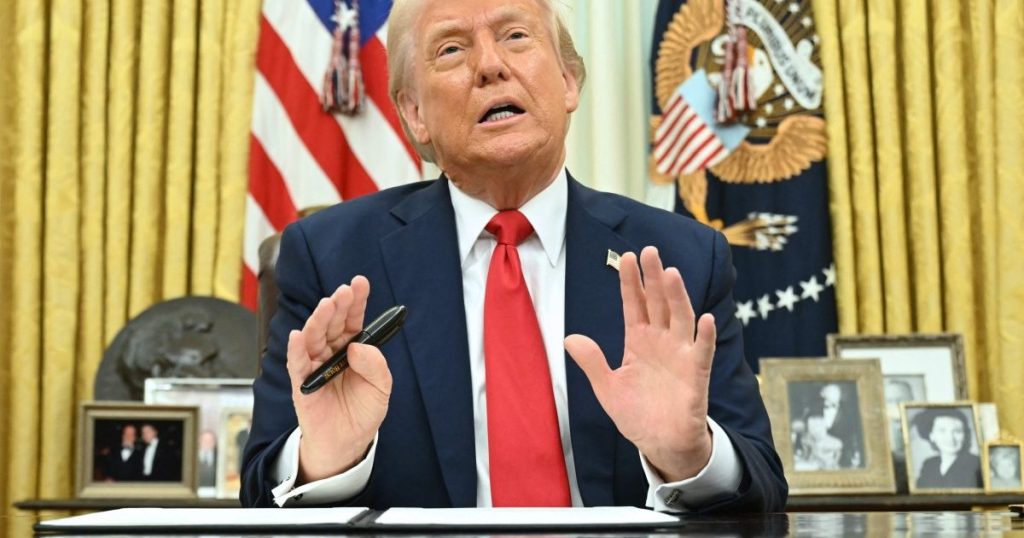Trump’s Trade Gamble: A High-Stakes Pursuit of Reciprocity
President Donald Trump’s vision of reshaping global trade dynamics reached a critical juncture as a self-imposed deadline for tariff deals loomed. The administration’s aggressive pursuit of bilateral agreements, coupled with threats of sweeping tariffs, created a complex web of negotiations and legal challenges. The central objective was to rectify what Trump perceived as unfair trade practices, leveraging tariffs as a tool to extract concessions and level the playing field for American businesses.
The administration’s strategy, however, faced significant hurdles. While deals were secured with several key partners, including Britain, Vietnam, Japan, Indonesia, the Philippines, South Korea, and the European Union, negotiations with others, notably Canada, remained unresolved. The eleventh-hour agreement with South Korea, at a 15% tariff rate significantly lower than the threatened 25%, underscored the intense bargaining involved. However, the imposition of a 50% tariff on Brazilian products, albeit with delays and exemptions, signaled the administration’s willingness to use trade as leverage in broader geopolitical contexts, in this case, seemingly related to Brazil’s prosecution of former president Jair Bolsonaro. Similarly, a 25% levy on Indian imports and warnings to Canada regarding its stance on Palestinian statehood highlighted the interconnectedness of trade policy with other foreign policy objectives.
Adding to the complexity was the ongoing legal battle over the administration’s use of emergency economic powers to justify the tariffs. An appeals court heard arguments challenging the legality of these measures, raising questions about the long-term viability of the tariff strategy. The administration defended its actions, citing the president’s broad discretion in handling national emergencies, including economic crises. This legal challenge underscored the potential for protracted legal battles and the uncertainty surrounding the ultimate fate of the tariffs.
A Mixed Bag of Deals and Delays
While the administration touted progress in securing agreements, the details often remained vague, leaving room for interpretation and future disputes. The EU, for instance, continued to seek exemptions for its wine industry despite a broader agreement. Crucially, the trade dispute with China, the world’s second-largest economy, remained unresolved. While a truce was in place, the underlying tensions and the potential for renewed escalation cast a long shadow over the global economic outlook. This ongoing trade war with China, characterized by tit-for-tat tariffs, further complicates the global trade landscape and adds to the uncertainty faced by businesses.
The situation with Canada, a crucial trading partner, was particularly precarious. Negotiations continued past the deadline, with disagreements over various issues hindering progress. Trump’s threat to impose trade repercussions on Canada for its planned recognition of a Palestinian state added a further layer of complexity to the already strained relationship. This linkage of trade policy with unrelated political issues further muddied the waters and underscored the unpredictable nature of the administration’s approach.
Economic Implications and Uncertain Outcomes
The administration’s claims of increased customs revenues since the start of the year were countered by economists who warned of the potential for inflationary pressures. This divergence of opinion highlighted the difficulty in assessing the long-term economic consequences of the tariff strategy. While increased tariffs might boost domestic industries in the short term, they could also lead to higher prices for consumers and retaliatory tariffs from other countries, ultimately harming the overall economy.
Trump’s trade policy, driven by a desire for reciprocity and a belief in the power of tariffs, represented a significant departure from traditional trade practices. The flurry of deals and threats created a climate of uncertainty, raising concerns about the stability and predictability of the global trading system. The legal challenges, unresolved disputes, and potential for further escalation underscored the high-stakes nature of the administration’s gamble. The long-term impact of this approach on both the US and the global economy remained to be seen, with both potential benefits and risks on the horizon.
In conclusion, the administration’s pursuit of a new world trade order through tariffs and bilateral agreements presented a complex and evolving situation. While some deals were reached, significant challenges remained, including the ongoing dispute with China, unresolved negotiations with key partners like Canada, and legal challenges to the administration’s use of emergency powers. The economic implications were uncertain, with the potential for both positive and negative consequences. The ultimate success or failure of this approach would depend on the delicate interplay of these various factors and the ability of the administration to navigate the complex landscape of global trade.


